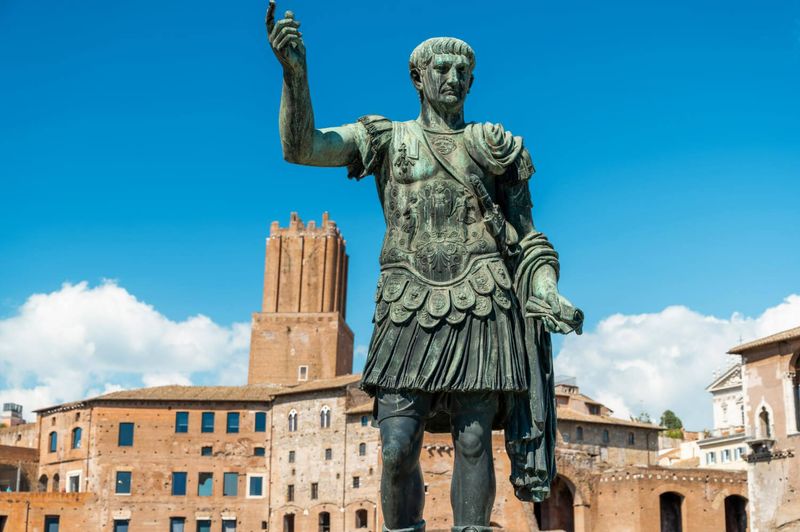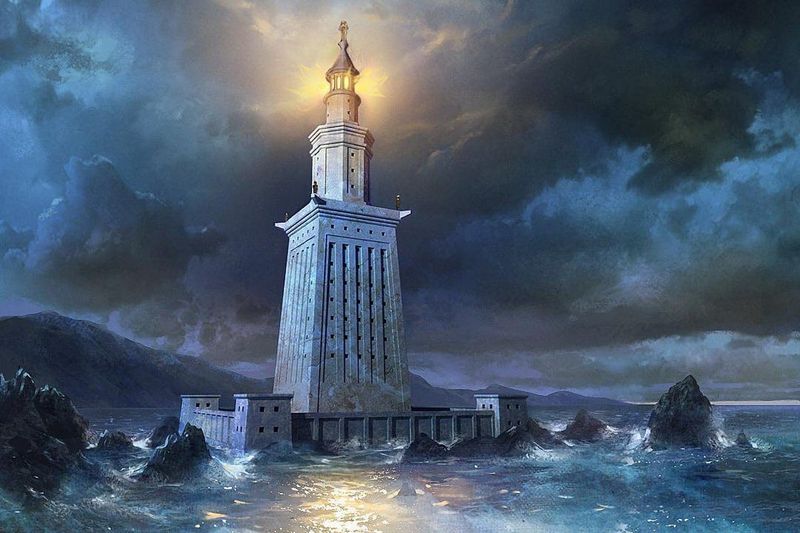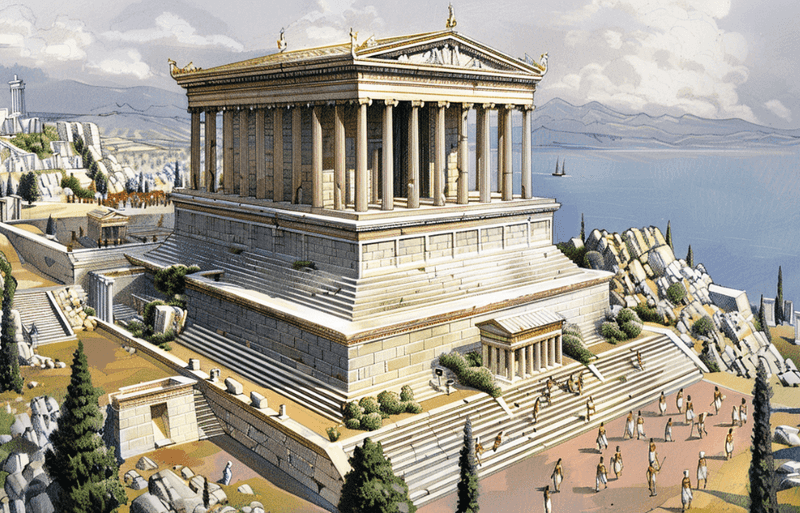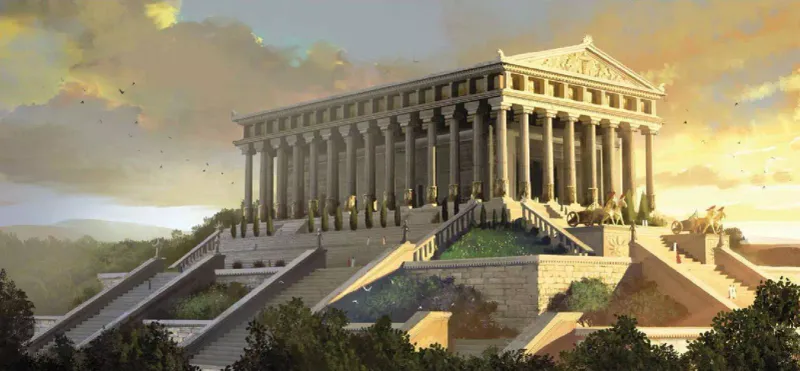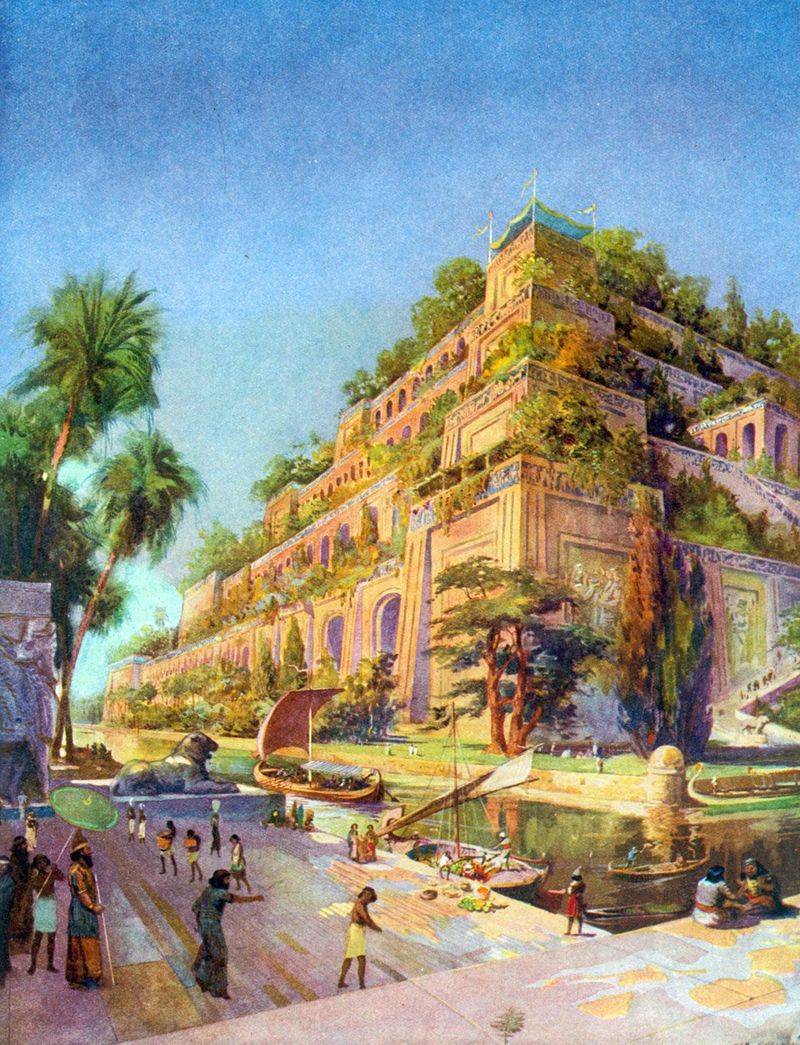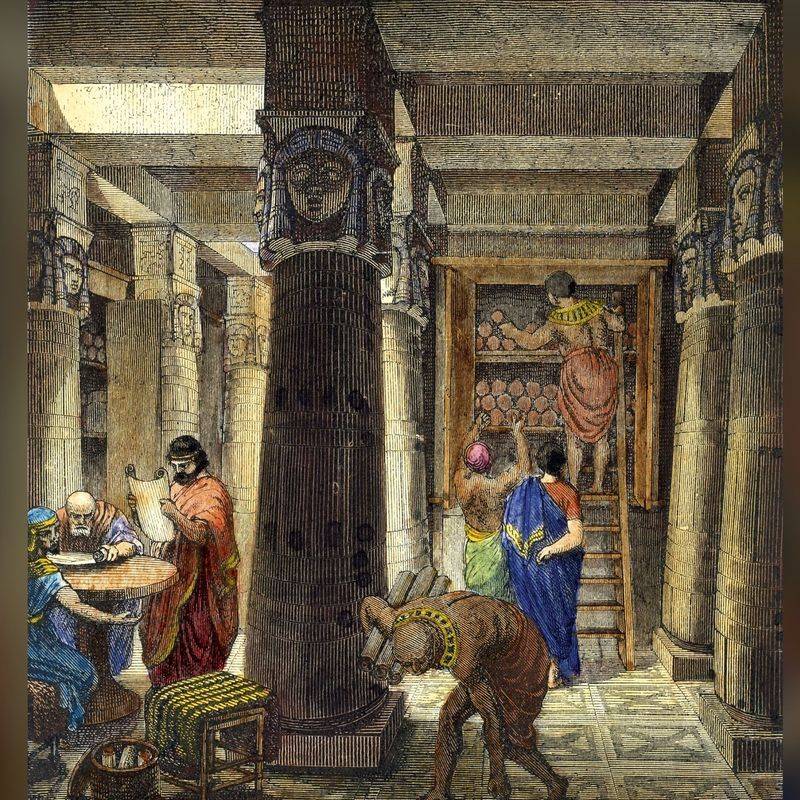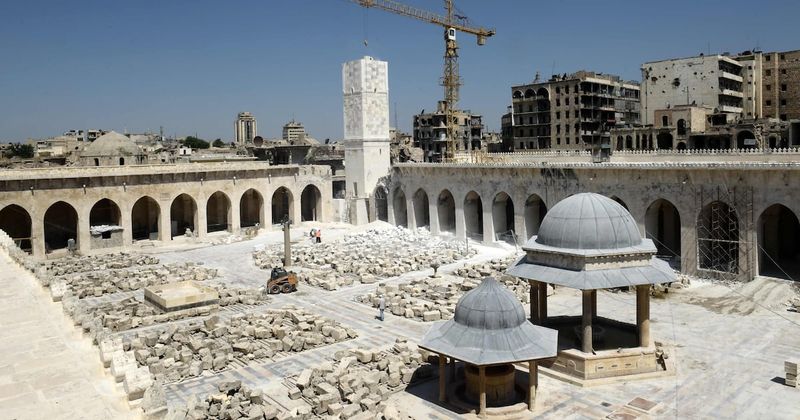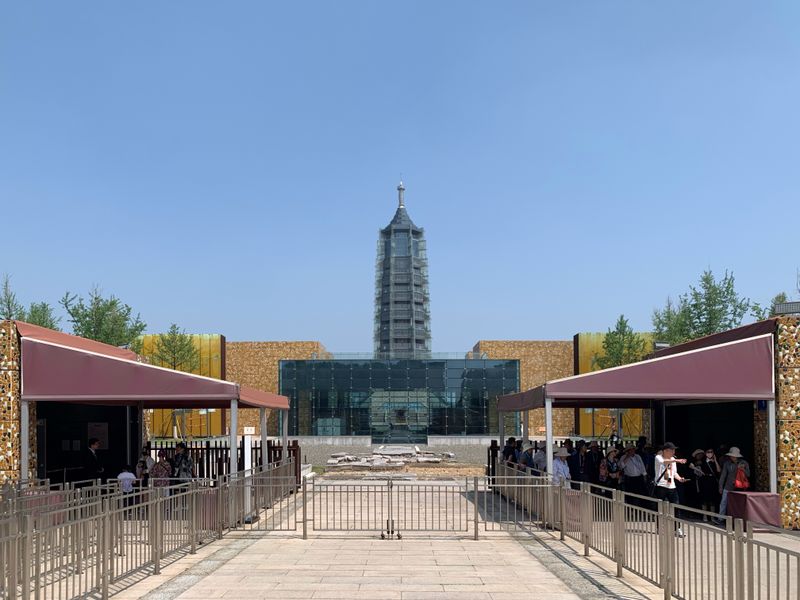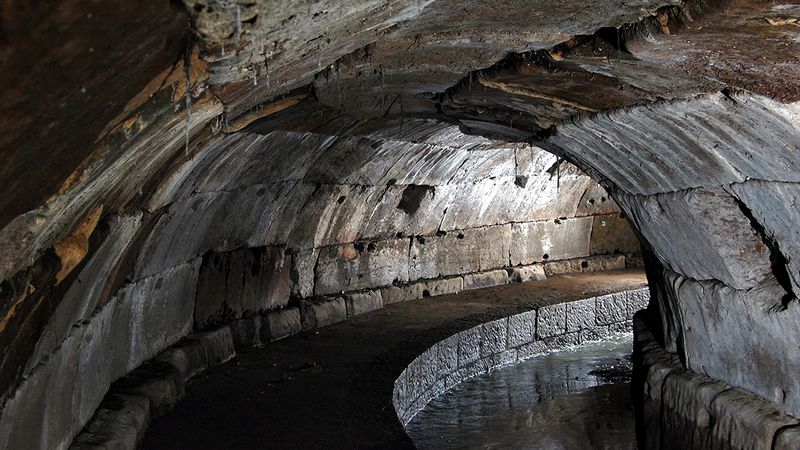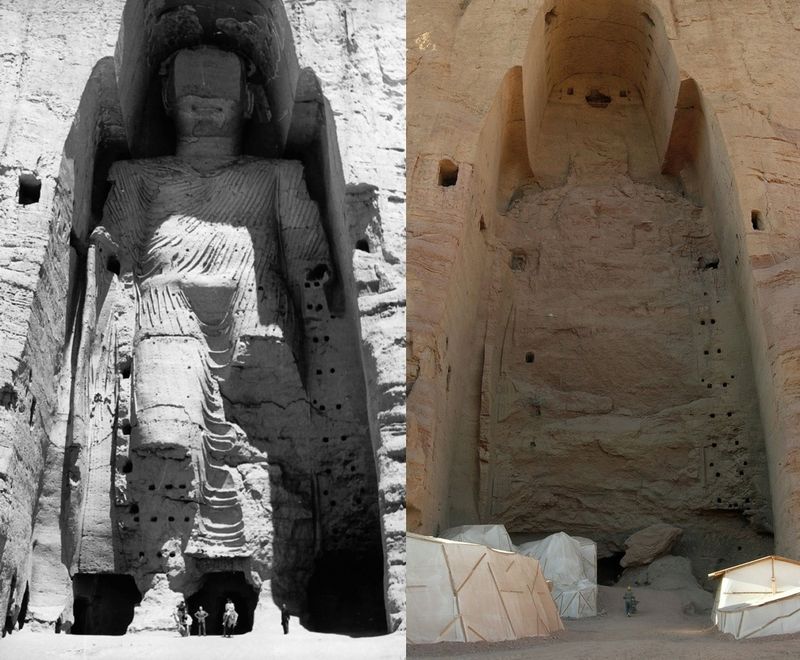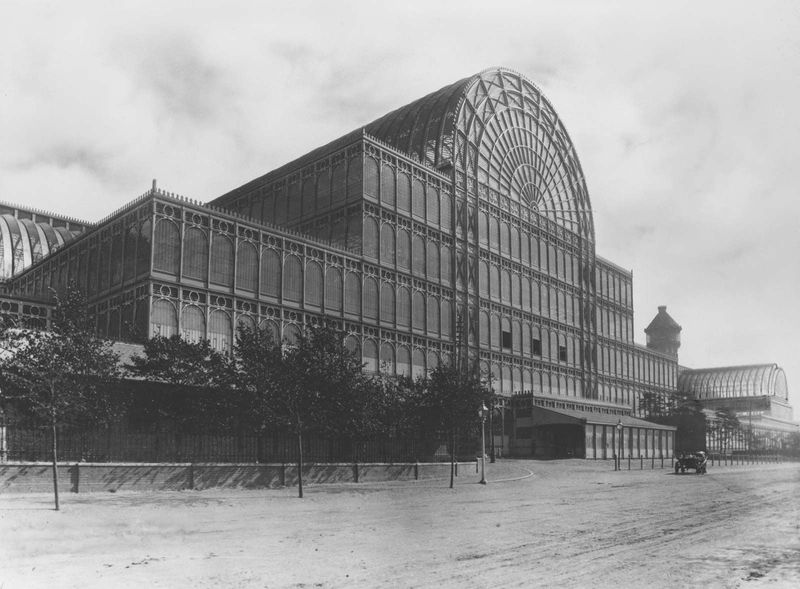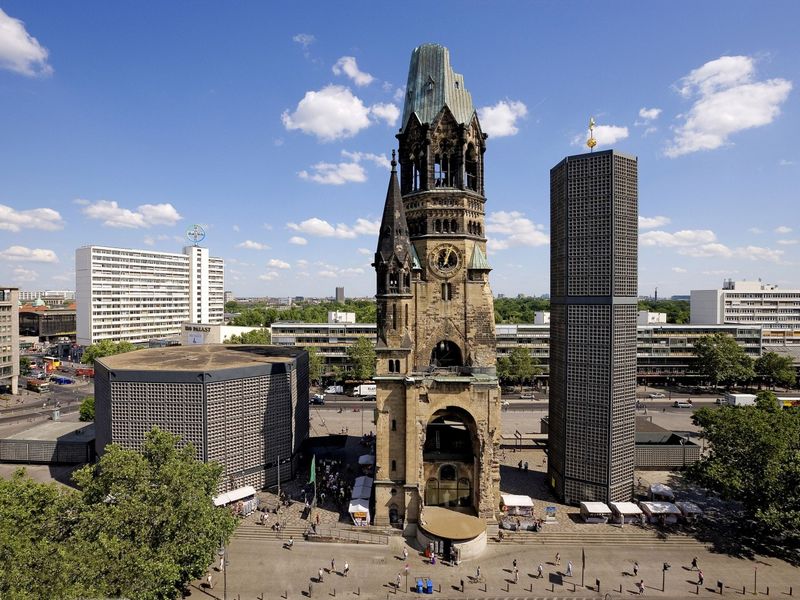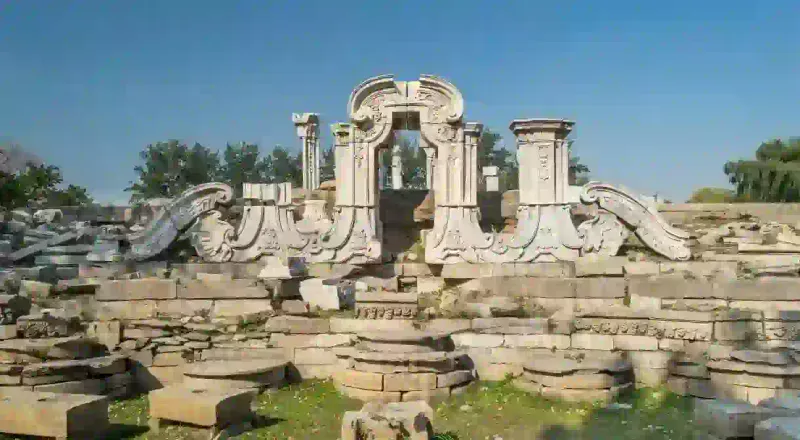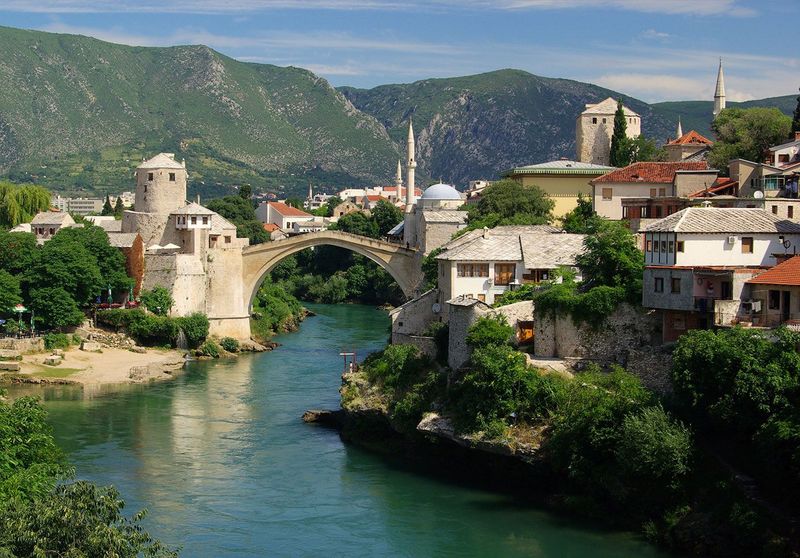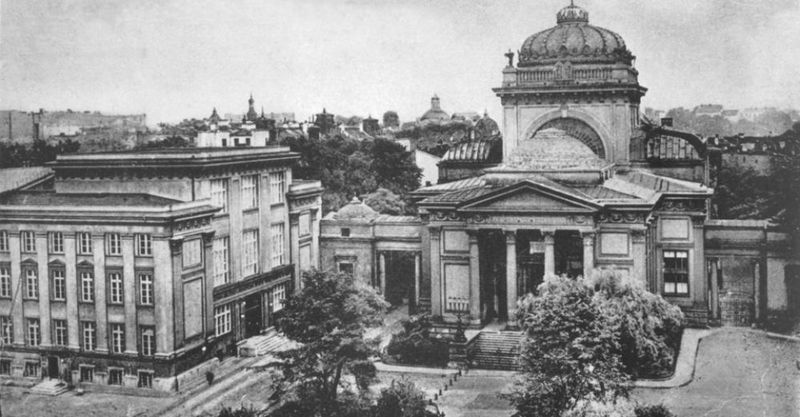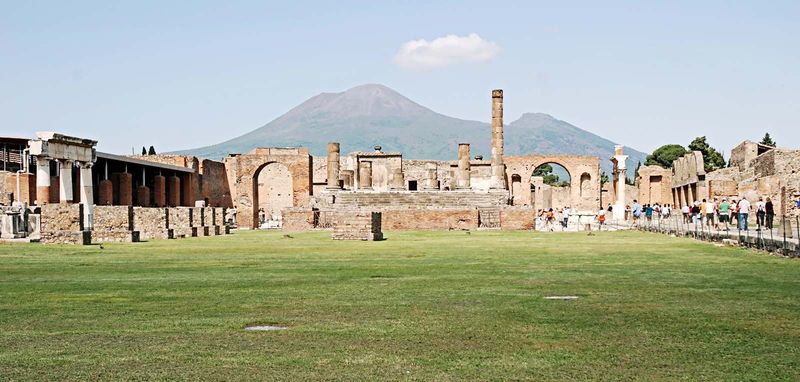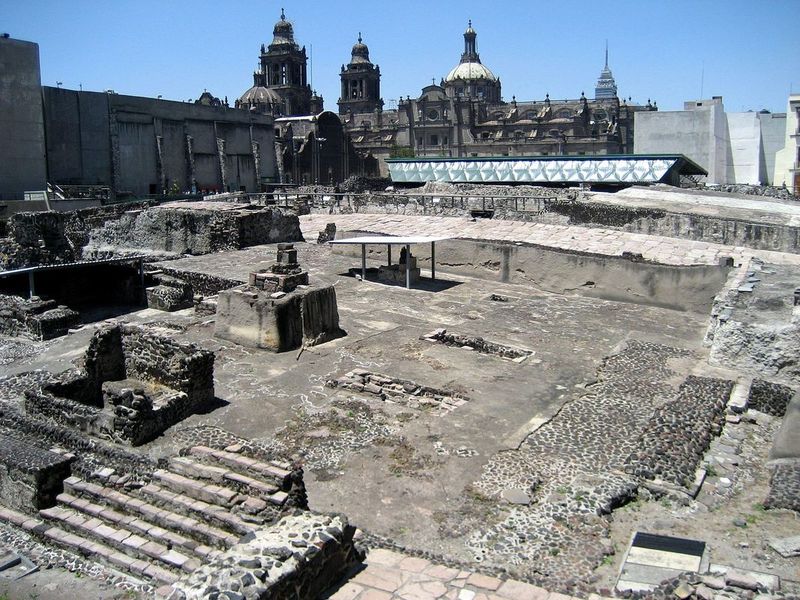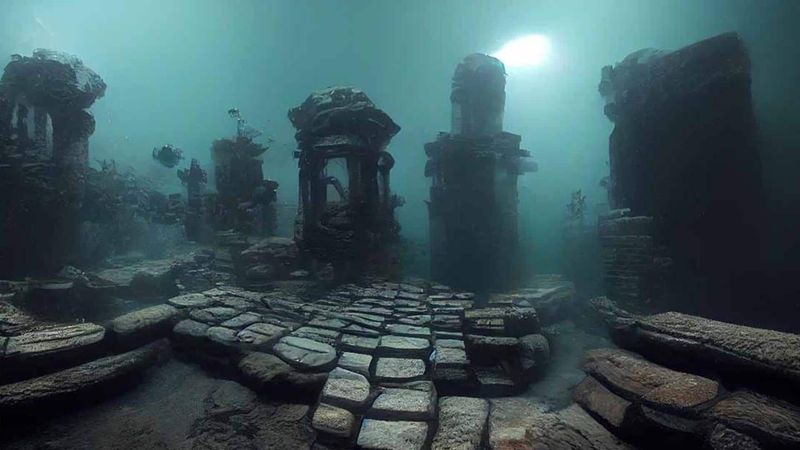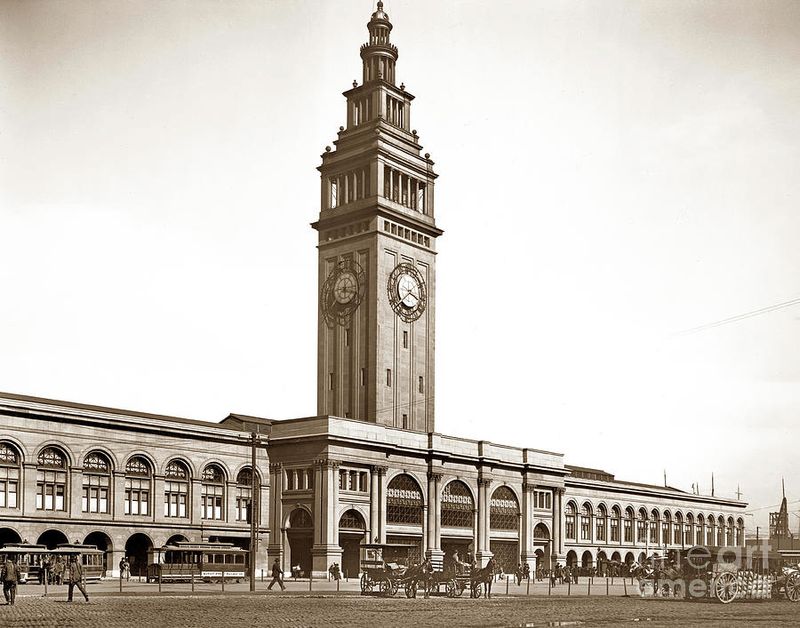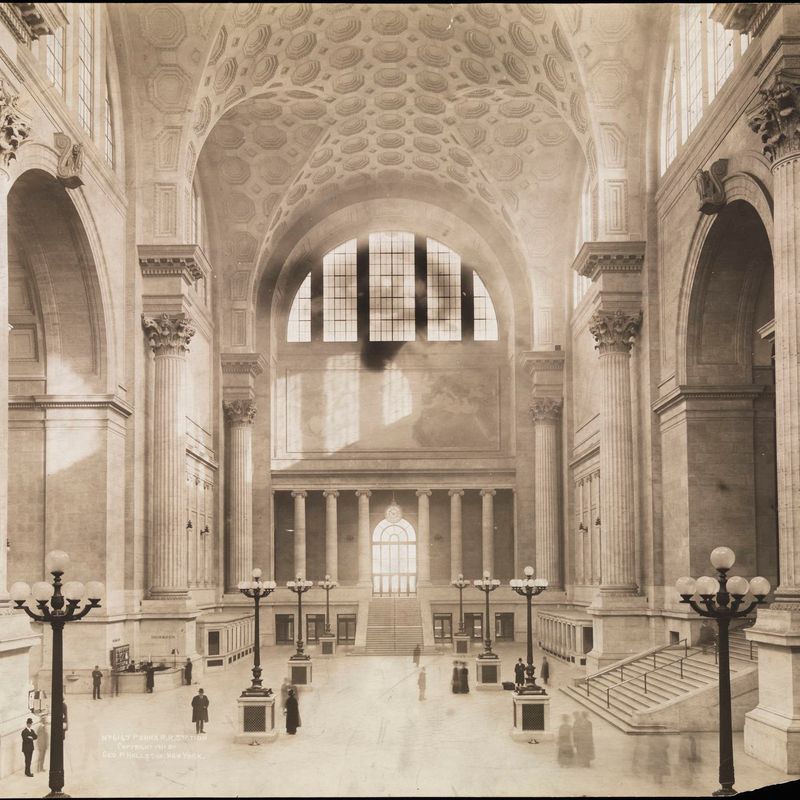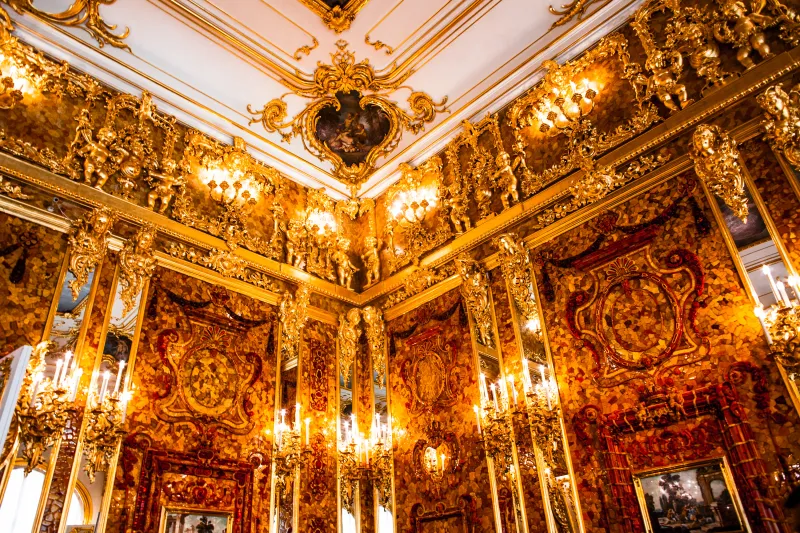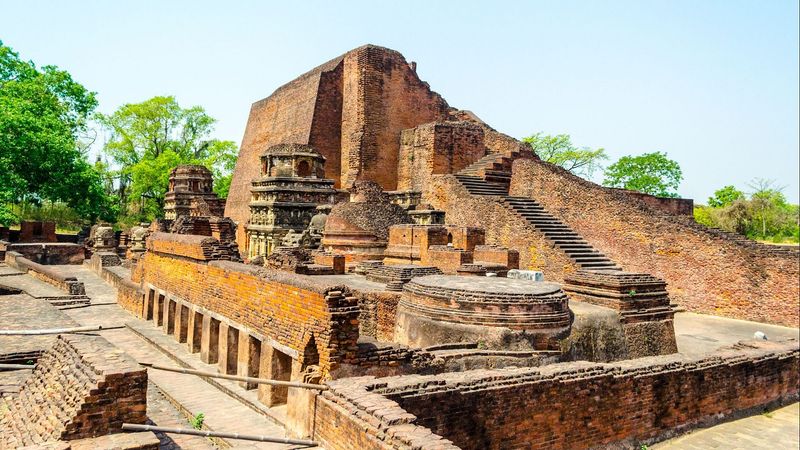Throughout history, monumental landmarks have stood as testaments to human ingenuity, culture, and ambition. Yet, many have succumbed to the relentless forces of nature, war, and human neglect. These lost landmarks, some of which were considered wonders of the world, now exist only in stories and ruins, serving as poignant reminders of our past. From ancient statues to grand architectural marvels, each had its unique story before time claimed them. This blog revisits 25 such landmarks, exploring their history and ultimate fate.
1. The Colossus of Rhodes
Standing as a beacon of freedom, The Colossus of Rhodes was a monumental statue of Helios, the Greek sun god. Erected in 280 BCE, it symbolized the unity and strength of the Rhodians after a successful defense against a siege. This colossal bronze figure stood 108 feet tall at the entrance of the harbor. Its grandeur was unmatched until an earthquake in 226 BCE toppled it, leaving a legacy that inspired the Statue of Liberty. Did you know? The Colossus took 12 years to build, showcasing the incredible engineering skills of ancient Greeks.
2. The Lighthouse of Alexandria
The Lighthouse of Alexandria, known as Pharos, guided sailors safely to the bustling ancient city. Constructed in the 3rd century BCE on the island of Pharos, it rose nearly 330 feet, making it one of the tallest man-made structures. Its light beamed across the sea for centuries, symbolizing Alexandria’s maritime power. Unfortunately, a series of earthquakes between the 12th and 15th centuries shattered its magnificent structure. With its stones repurposed for other projects, the lighthouse’s loss marked the end of an era. Imagine seeing its light flickering across the Mediterranean waves centuries ago!
3. The Mausoleum at Halicarnassus
A tribute to love and legacy, the Mausoleum at Halicarnassus was built for Mausolus, the Persian satrap, and his wife Artemisia. This grand tomb, completed in 350 BCE, stood majestically at 148 feet high. Its architectural brilliance, combining Greek, Egyptian, and Lycian elements, inspired the term ‘mausoleum.’ Earthquakes and invasions took their toll over the centuries, with Crusaders dismantling it for building materials. By the 15th century, little remained of this wonder. The term ‘mausoleum’ remains, immortalizing its grandeur and cultural significance. Curious about what inspired the word ‘mausoleum’? This landmark is your answer!
4. The Temple of Artemis at Ephesus
The Temple of Artemis at Ephesus was a marvel of ancient architecture, dedicated to the goddess Artemis. This grand structure was rebuilt around 323 BCE after being burned by Herostratus. With its 127 Ionic columns, it was one of the Seven Wonders, attracting pilgrims and traders. Sadly, the Goths destroyed it in the 3rd century CE, and it was forgotten over time. Its detailed carvings and grand scale left a lasting impression on visitors. Did you know? The temple was twice the size of the Parthenon, showcasing the grandeur of ancient Ephesus.
5. The Hanging Gardens of Babylon
One of the most debated wonders, The Hanging Gardens of Babylon remains shrouded in mystery. Allegedly built by King Nebuchadnezzar II for his wife, the gardens were said to defy gravity with their lush terraces. While no concrete evidence has proven their existence, ancient writers vividly described them as engineering marvels. If real, they likely succumbed to earthquakes or neglect around the 1st century BCE. The gardens continue to captivate imaginations, symbolizing ancient innovation and luxury. Did they ever exist? The mystery of the gardens endures, inviting endless fascination and speculation.
6. The Great Library of Alexandria
A beacon of knowledge, the Great Library of Alexandria was once the largest repository of ancient wisdom. Founded in the 3rd century BCE, it housed countless scrolls from various cultures and attracted scholars worldwide. Over centuries, multiple incidents, including Julius Caesar’s fire, contributed to its gradual destruction. By 642 CE, this intellectual hub was lost, erasing untold volumes of literature and scientific advancements. Its legacy lives on, symbolizing the quest for knowledge. Imagine walking amidst its scroll-laden halls, surrounded by the whispers of history’s greatest minds. What treasures did it hold? History may never fully reveal.
7. The Umayyad Mosque of Aleppo
The Umayyad Mosque of Aleppo, a masterpiece of medieval Islamic architecture, stood as a spiritual and cultural beacon. Built in the 12th century, it featured an impressive minaret and exquisite mosaics. Sadly, the Syrian Civil War brought severe damage to this symbol of Aleppan heritage. Its minaret, an iconic feature, was tragically destroyed in 2013. Efforts to restore the mosque have begun, symbolizing resilience amid destruction. Imagine the calls to prayer echoing through its bustling courtyards, an enduring testament to faith and community. The mosque’s scars tell stories of both past grandeur and contemporary upheaval.
8. The Porcelain Tower of Nanjing
The Porcelain Tower of Nanjing, a symbol of Chinese ingenuity, dazzled visitors with its beauty. Built in the 15th century during the Ming Dynasty, this pagoda was adorned with vibrant glazed tiles. Its nine stories reached 260 feet, making it a marvel of architecture. Unfortunately, the Taiping Rebellion led to its destruction in 1856, erasing this iconic landmark from Nanjing’s skyline. Yet, its legacy endures in stories and historical records. Did you know? The tower was once considered the world’s most beautiful building, attracting admiration from far and wide.
9. The Cloaca Maxima
The Cloaca Maxima of ancient Rome was a testament to Roman engineering prowess. Built in the 6th century BCE, this massive sewer system diverted waste from the city, preventing disease and flooding. Over time, it became a symbol of Rome’s advancement and urban planning. Today, much of it lies buried beneath the bustling streets of modern Rome. Its remnants remind us of the city’s innovative spirit. Did you know? The Cloaca Maxima inspired modern sewage systems, showcasing its enduring influence on urban development. Its subterranean chambers echo the ingenuity of ancient Rome.
10. The Buddhas of Bamiyan
The Buddhas of Bamiyan, towering stone statues carved into Afghanistan’s cliffs, symbolized religious harmony and artistic achievement. Created in the 6th century, they stood 115 and 174 feet tall, overlooking the Bamiyan Valley. These statues were tragically destroyed by the Taliban in 2001, erasing a cultural treasure. Efforts to preserve their memory continue, as their niches remind us of what once was. Did you know? The Buddhas were once adorned with vibrant paint, adding to their majestic presence. Their absence underscores the fragility of cultural heritage in conflict zones.
11. The Crystal Palace (London)
The Crystal Palace, an architectural wonder of Victorian Britain, showcased the Great Exhibition of 1851. Made entirely of glass and iron, it symbolized the dawn of the industrial age. Standing in Hyde Park, London, it was a marvel of innovation, attracting millions. Sadly, a devastating fire in 1936 reduced it to ashes, leaving only memories of its grandeur. Its influence on modern architecture remains profound, inspiring future glass structures. Imagine walking through its sun-drenched halls, a testament to human creativity and progress. The palace’s legacy lives on, a symbol of a transformative era.
12. The Kaiser Wilhelm Memorial Church
The Kaiser Wilhelm Memorial Church in Berlin stands as a poignant memorial to the ravages of war. Originally a grand 19th-century church, it suffered severe damage during World War II bombings. Today, its ruined spire remains, alongside a modern church, symbolizing reconciliation and remembrance. It serves as a stark reminder of conflict’s impact on cultural heritage. Did you know? The church’s preserved damage is intentional, a visual reminder of the past. Visitors flock to its ruins, finding beauty in resilience and reflection amidst Berlin’s bustling modernity.
13. The Old Summer Palace
The Old Summer Palace, once a sprawling symbol of Chinese imperial grandeur, lay in ruins after the British and French forces looted and burned it in 1860. Spanning over 860 acres, it was famed for its gardens, architecture, and art. The destruction marked a significant cultural loss, echoing geopolitical tensions of the time. Today, its ruins stand as a solemn reminder of what was lost. Did you know? The palace was considered an epitome of Chinese craftsmanship, with European influences blending harmoniously. Its loss remains a poignant chapter in history.
14. The Stari Most (Mostar Bridge)
The Stari Most, Mostar’s iconic stone bridge, symbolized unity between diverse communities. Built in the 16th century during the Ottoman Empire, it featured a stunning arch over the Neretva River. Tragically, artillery fire destroyed it during the Bosnian War in 1993. Rebuilt in 2004, it now stands as a powerful symbol of reconciliation and resilience. Did you know? Divers leap from the bridge in an annual tradition, showcasing both bravery and a celebration of heritage. The Stari Most’s story is one of destruction and rebirth, mirroring a nation’s journey towards peace.
15. The Great Synagogue of Warsaw
The Great Synagogue of Warsaw, once the world’s largest, stood as a vibrant center of Jewish life. Completed in 1878, it was an architectural masterpiece, embodying the spirit of Warsaw’s Jewish community. Tragically, it was destroyed by the Nazis in 1943 during the Warsaw Ghetto Uprising, a profound cultural loss. Today, its absence is deeply felt, symbolizing the horrors of war and genocide. Did you know? The synagogue’s architect, Leandro Marconi, also designed the Warsaw Philharmonic Hall, linking two cultural icons. Its memory endures in the hearts of those who remember.
16. The City of Pompeii
The ancient city of Pompeii, once a bustling Roman hub, met a tragic fate when Mount Vesuvius erupted in 79 CE. Ash and pumice buried the city, preserving it as a time capsule. Rediscovered in the 18th century, its ruins offer insights into Roman life, though it ceased to exist as a living city. Pompeii’s eerie silence speaks volumes, as frescoes and relics whisper stories of the past. Did you know? The eruption was so sudden that life was frozen in an instant, capturing daily Roman life in remarkable detail. A journey back in time awaits in Pompeii.
17. The Aztec Capital of Tenochtitlán
Tenochtitlán, the vibrant heart of the Aztec Empire, was a marvel of urban planning and architecture. Founded in 1325, it flourished until Spanish conquistadors razed it in 1521, making way for Mexico City. Once home to grand temples and bustling markets, its legacy is etched in the history of modern Mexico. Did you know? Tenochtitlán was built on an island in Lake Texcoco, connected by causeways. Today, its remnants lie beneath Mexico City’s foundations, whispering tales of a once-great civilization. Its spirit endures, a testament to the Aztec Empire’s enduring influence.
18. The Easter Island Moai (Some Toppled)
The enigmatic Moai statues of Easter Island, carved by the Rapa Nui people, stand as silent sentinels. These massive stone figures, some weighing over 75 tons, were toppled during tribal conflicts. They are believed to embody ancestral spirits, watching over the island. Despite their mysterious purpose, they remain cultural icons. Did you know? The island’s isolation led to unique cultural developments, with the Moai continuing to intrigue historians and tourists alike. Their silent gazes evoke a sense of wonder and mystery, connecting us to the island’s rich heritage and enigmatic past.
19. The Port Royal (Jamaica)
Port Royal, once known as the ‘wickedest city on earth,’ was a vibrant pirate haven in the Caribbean. In 1692, an earthquake and tsunami sank much of the city beneath the sea. Known for its taverns and treasure-laden ships, it was a hub of commerce and contraband. Today, its underwater ruins are a historical treasure, offering glimpses into its infamous past. Did you know? Port Royal’s rapid submergence preserved many artifacts, now a fascinating underwater archaeological site. Its sunken streets and relics tell tales of a bygone era of piracy and adventure.
20. The San Francisco Ferry Building Clock Tower
The San Francisco Ferry Building, with its iconic clock tower, stood as a symbol of the city’s maritime heritage. Built in 1898, it was the busiest transit terminal in the world by the early 20th century. Although the 1906 earthquake damaged it, the tower was modified rather than demolished. It continues to serve as a vibrant marketplace and office space. Did you know? The Ferry Building’s clock is the largest dial clock in the world, a testament to precision and innovation. Its presence connects the past and present of San Francisco’s bustling life.
21. The Penn Station (Original, NYC)
New York City’s original Penn Station, a Beaux-Arts masterpiece, embodied the grandeur of early 20th-century architecture. Opened in 1910, it was an awe-inspiring gateway to the city. Despite public outcry, it was demolished in 1963, a loss that spurred preservation movements nationwide. Its demolition marked a turning point in architectural conservation. Did you know? The station’s destruction led to the establishment of the New York City Landmarks Preservation Commission. Penn Station’s legacy endures in the city’s architectural consciousness, a reminder of what can be lost without vigilance.
22. The Singer Building (NYC)
The Singer Building, once the tallest in the world, symbolized New York’s rapid growth and architectural ambition. Completed in 1908, it stood 612 feet tall with intricate details. Demolished in 1968, it remains one of the tallest buildings ever intentionally torn down. Its demolition shocked many, highlighting the changing priorities of urban development. Did you know? The Singer Building’s ornate design showcased the opulence of the early 20th century. Its absence is felt in New York’s skyline, a testament to both progress and the fleeting nature of architectural marvels.
23. The Atlantean Ruins (If They Existed)
The mythical Atlantis, first mentioned by Plato, captivates imaginations with tales of advanced civilizations and cataclysmic downfall. Though its existence remains speculative, stories describe a utopian society that vanished beneath the waves. Atlantis symbolizes lost knowledge and the enduring quest for discovery. Did you know? The debate over Atlantis’ existence has inspired countless expeditions and theories. Its allure lies in the possibility of uncovering a hidden past. Whether myth or reality, Atlantis continues to inspire and intrigue, embodying the eternal human fascination with the unknown and the uncharted.
24. The Amber Room (Russia)
The Amber Room, a jewel of Tsarskoye Selo, dazzled visitors with its opulence. Crafted in the 18th century, this chamber of amber panels and gold leaf was a gift to Peter the Great. During World War II, the Nazis looted it, and its whereabouts remain a mystery. Efforts to recreate it have been made, yet the original’s fate adds intrigue to its legacy. Did you know? The Amber Room was dubbed the ‘Eighth Wonder of the World’ for its splendor. Its disappearance continues to captivate treasure hunters and historians alike.
25. The Nalanda University (India)
Nalanda University, once a beacon of learning in ancient India, flourished from the 5th to the 12th century. Renowned for its diverse curriculum and esteemed scholars, it attracted students worldwide. In 1193, invaders set it ablaze, ending its scholarly legacy. Despite its destruction, Nalanda’s impact on education and culture endures. Did you know? Nalanda housed a vast library, ‘Dharma Gunj,’ believed to hold countless ancient texts. Its ruins stand as a testament to intellectual pursuit and cultural exchange. The echoes of scholarly debates once filled its halls, inspiring generations.

